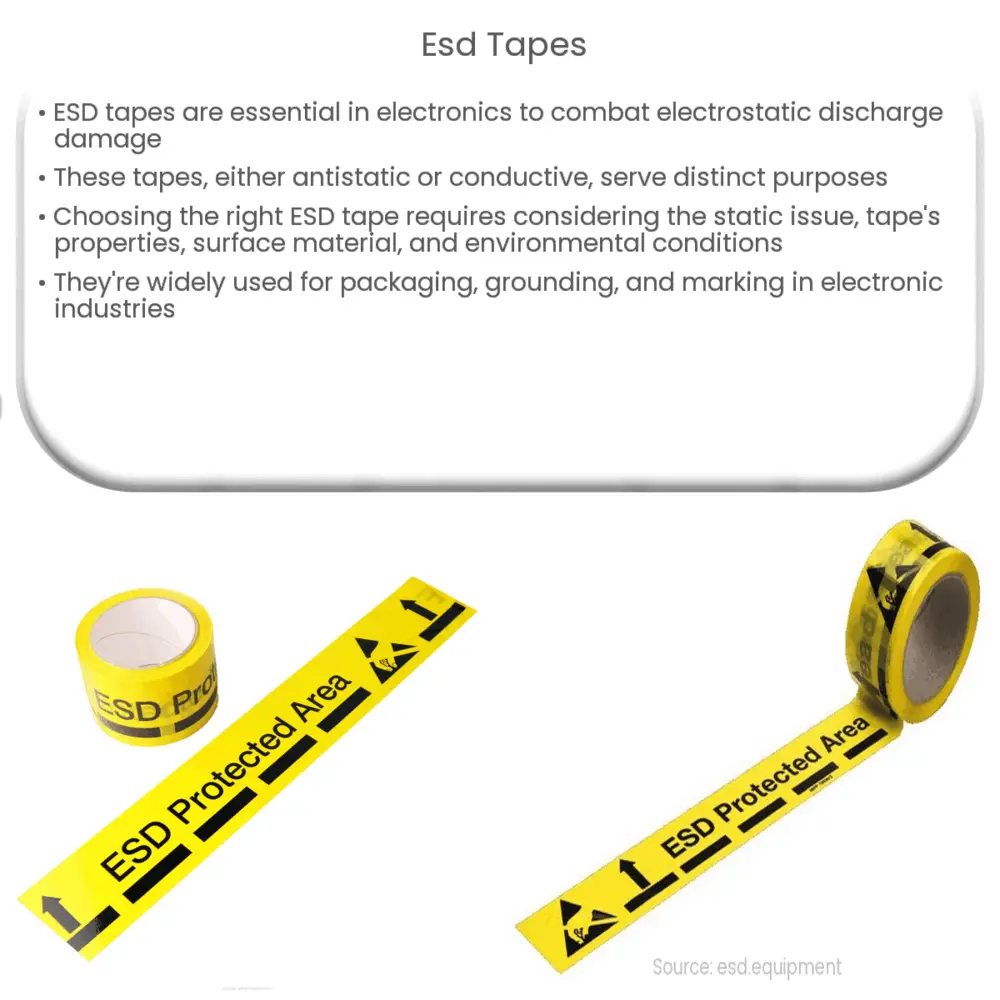Explore the importance, types, and applications of ESD tapes in protecting sensitive electronics from static electricity damage.

Understanding the Importance of ESD Tapes
In the rapidly evolving field of electronics, a small static charge can cause significant damage. This is where Electrostatic Discharge (ESD) tapes come into play. ESD tapes are a critical component in various industrial and electronic applications, designed specifically to combat electrostatic discharge and the potential havoc it can wreak on sensitive components.
ESD tapes are not ordinary adhesive tapes. They have been specially engineered to either prevent the buildup of static electricity or to dissipate it effectively. There are two primary types of ESD tapes, each serving a unique purpose.
Types of ESD Tapes
Both of these types of tapes are vital in protecting sensitive electronics and reducing potential damage due to electrostatic discharge.
Factors to Consider When Choosing ESD Tapes
Several factors need to be considered when selecting the appropriate ESD tape for a specific application. These include the nature of the static problem, the physical characteristics of the tape, the surface material to which the tape will be applied, and environmental conditions.
Understanding these factors is crucial to selecting the right ESD tape for your specific needs, ensuring that sensitive electronics are appropriately safeguarded against potential ESD damage.
Application of ESD Tapes
ESD tapes find extensive use in several areas. They are commonly used in electronic manufacturing industries, where sensitive components need protection against static electricity. These tapes are used in the packaging of electronic components, grounding, and even in creating ESD safe areas by marking floors or workstations.
Conclusion
In conclusion, ESD tapes serve as a crucial defense line against the often overlooked but potentially harmful static electricity in various industrial and electronics applications. These tapes, available in antistatic and conductive variants, offer different solutions for a range of static problems. By considering factors like the nature of the static problem, physical characteristics of the tape, surface material, and environmental conditions, one can select the appropriate ESD tape to protect sensitive electronics and ensure a smooth, efficient operation. As technology continues to advance and electronics miniaturize, the role of ESD tapes will only become more vital.

